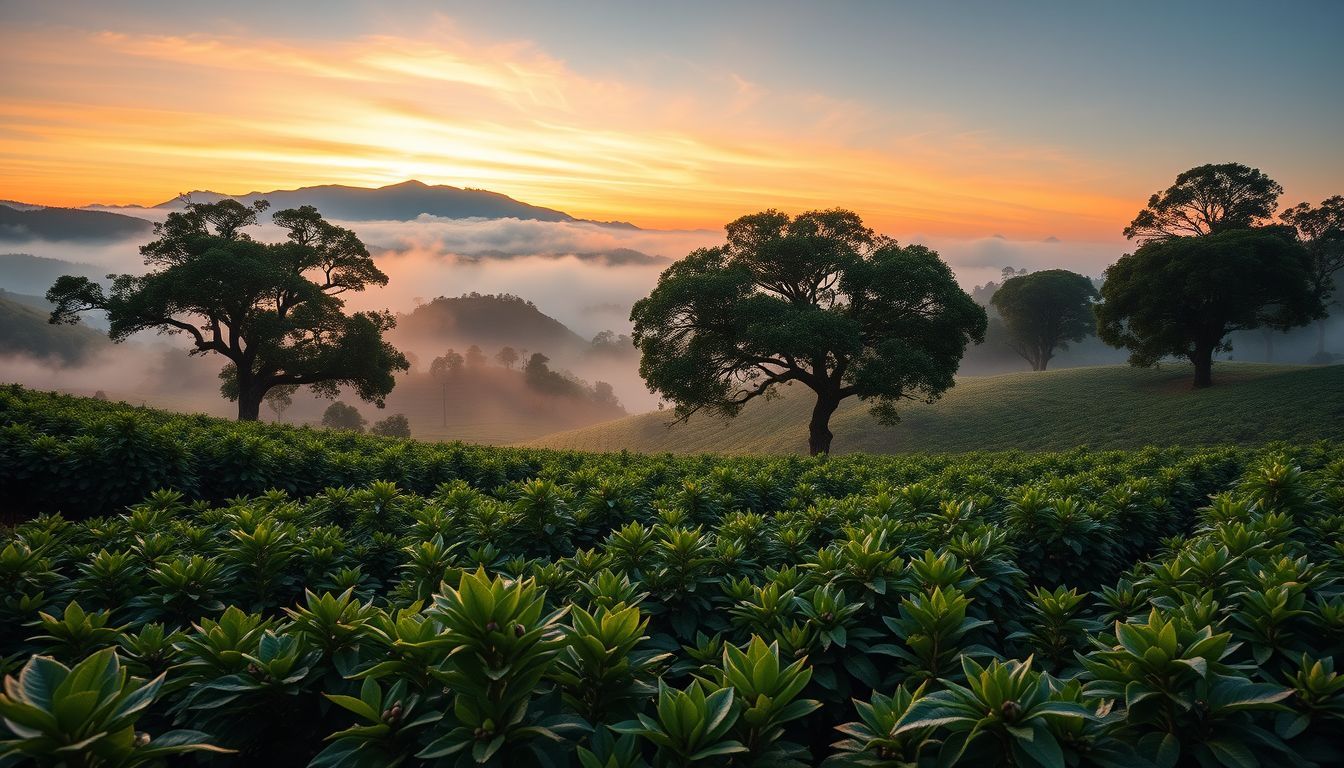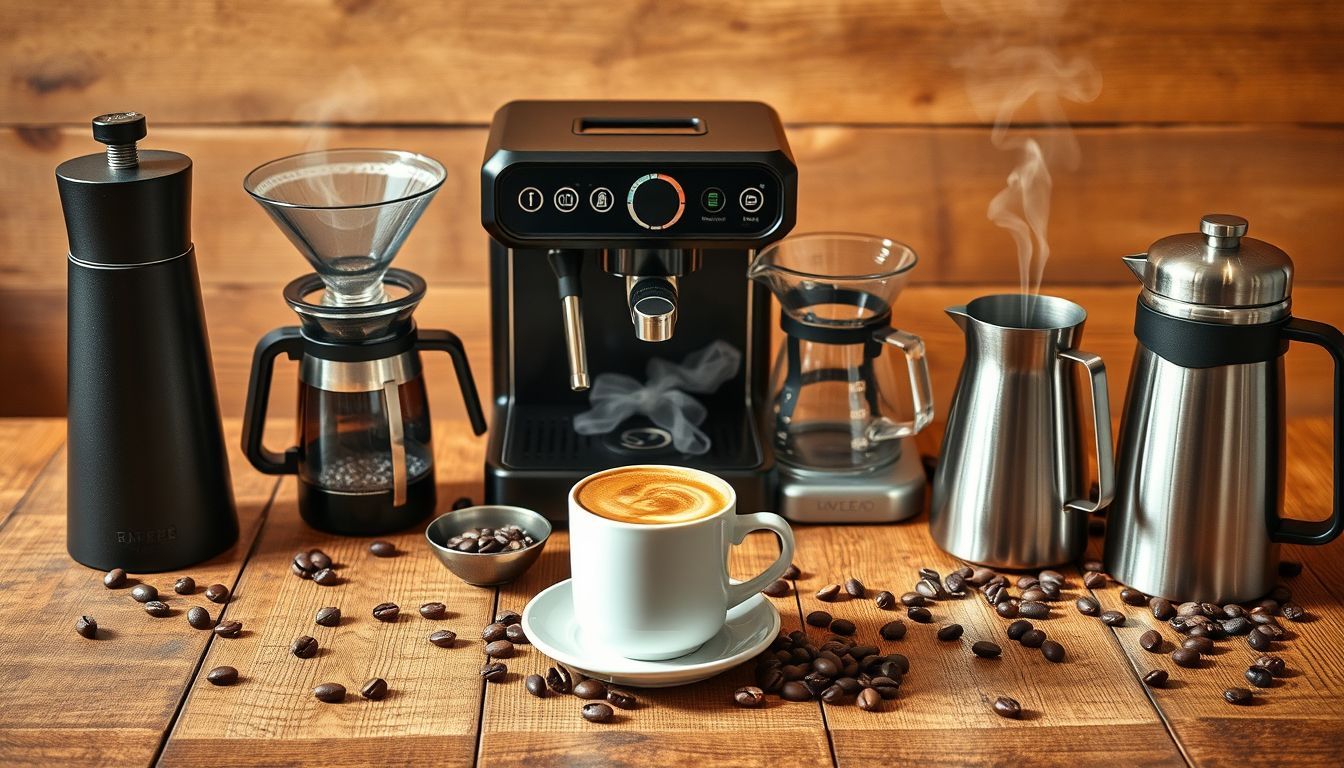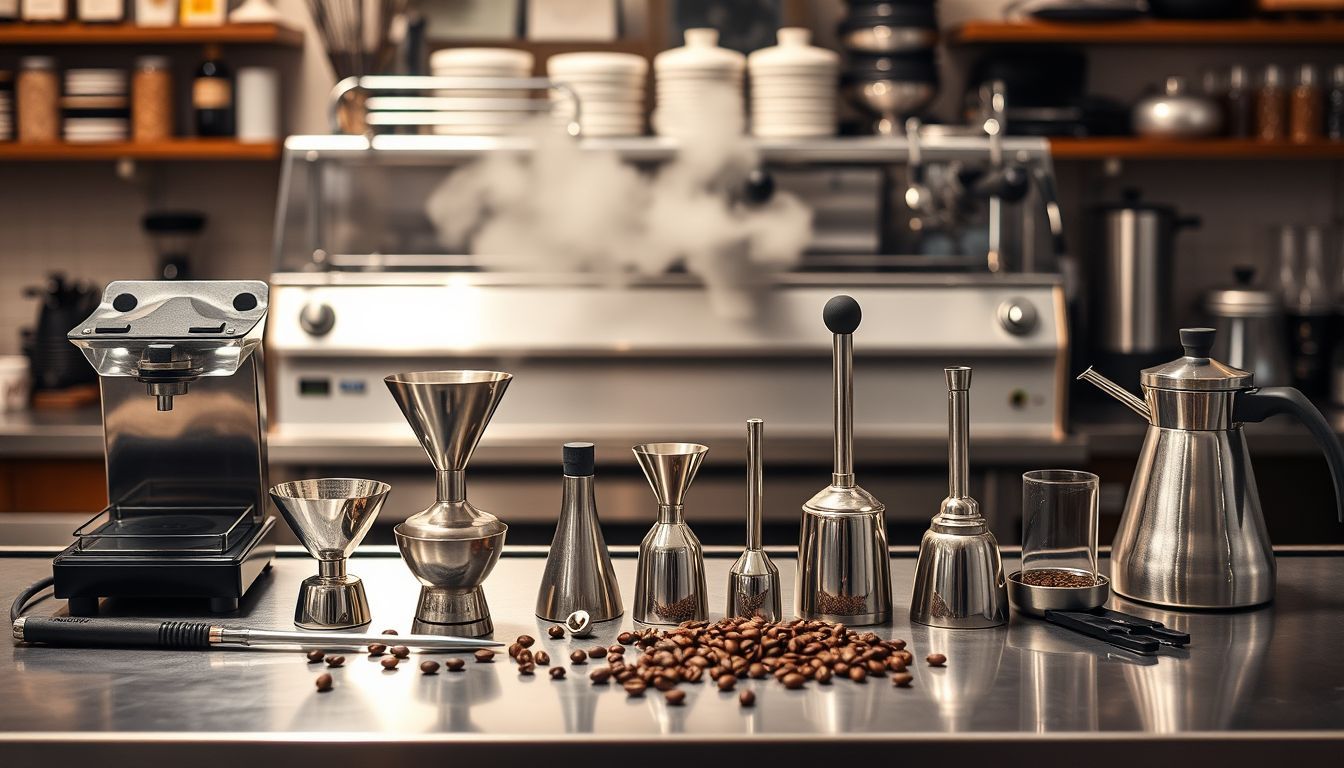Best Coffee Equipment for Making Decaf That Doesn't Suck
Decaf doesn't have to taste like disappointment. Discover equipment and techniques that maximize flavor from decaffeinated beans, from gentle brewing methods to precision extraction.

Amazon Affiliate Disclosure
This post contains affiliate links. If you purchase through these links, we may earn a small commission at no additional cost to you.
Last month, I served a blind tasting to a group of coffee professionals that included what I described as a "complex Ethiopian single-origin with notes of chocolate and citrus." The room erupted in appreciative murmurs about the balanced acidity, the clean finish, and the impressive body. Then I dropped the bomb: it was decaf. The silence that followed was broken only by the sound of preconceptions crashing to the floor.
This moment perfectly illustrates the biggest challenge facing decaf coffee: not the beans themselves, but the assumption that decaffeinated coffee is inherently inferior. While it's true that the decaffeination process removes some flavor compounds along with caffeine, modern decaf beans can be genuinely excellent when treated with the respect and technique they deserve.
The problem isn't that decaf coffee is bad—it's that most people brew it badly. Decaffeinated beans have different extraction characteristics than regular coffee, and equipment choices that work perfectly for caffeinated coffee can highlight the weaknesses in decaf while masking its strengths.
After years of testing brewing methods specifically with decaf beans and working with roasters who specialize in high-quality decaffeinated coffee, I've discovered that the right equipment and techniques can produce decaf that's not just "good for decaf"—it's genuinely good coffee, period.
Understanding Decaf: Why It's Different
Before diving into equipment recommendations, let's understand what makes decaffeinated coffee unique and why it requires different brewing approaches.
The Decaffeination Impact
Structural Changes
Decaffeination processes—whether water-based, solvent-based, or CO₂ extraction—alter the cellular structure of coffee beans. This affects how water moves through the grounds during brewing.
Flavor Compound Loss
Along with caffeine, some volatile aromatic compounds are removed during decaffeination. This is why decaf often tastes "flatter" than regular coffee.
Extraction Rate Changes
Decaf beans typically extract faster than regular coffee due to their altered structure, making them more prone to over-extraction and bitterness.
Density Variations
Decaffeinated beans are often less dense than regular beans, affecting grind behavior and extraction timing.
The Equipment Implications
Gentler Extraction Needed
Decaf benefits from brewing methods that provide controlled, gentle extraction rather than aggressive techniques.
Temperature Sensitivity
Decaf is more sensitive to water temperature variations, requiring precise temperature control.
Timing Precision
The faster extraction rate means timing becomes more critical to avoid over-extraction.
Filtration Considerations
Different filtration methods can either enhance or diminish the remaining flavor compounds in decaf.
Brewing Methods That Enhance Decaf
Pour-Over: Precision and Control
Pour-over methods excel with decaf because they provide precise control over water temperature, contact time, and extraction rate.
Hario V60: The Decaf Champion
Why it works for decaf:
- Precise control over pouring speed and pattern
- Ability to adjust extraction timing
- Clean filtration that doesn't mask delicate flavors
- Temperature control through pouring technique
Optimal V60 technique for decaf:
- Water temperature: 195–200°F (slightly cooler than regular coffee)
- Grind: Medium-fine, slightly coarser than for regular coffee
- Ratio: 1:16 to 1:17 (slightly stronger than typical)
- Pour pattern: Gentle, consistent pours to avoid over-agitation
Equipment recommendation: Hario V60 Ceramic Coffee Dripper, Size 02
Chemex: Clean and Forgiving
Why it works for decaf:
- Thick filters remove bitter compounds
- Slower extraction rate prevents over-extraction
- Large brewing chamber allows for even saturation
- Visual brewing process enables timing adjustments
Optimal Chemex technique for decaf:
- Water temperature: 200°F
- Grind: Medium-coarse
- Ratio: 1:15 to 1:16
- Bloom time: 45 seconds (longer than regular coffee)
Equipment recommendation: Chemex Classic 6-Cup ($44) with Chemex Bonded Filters ($8)
Immersion Methods: Gentle and Consistent
Immersion brewing methods work excellently with decaf because they provide gentle, even extraction without the risk of over-agitation.
French Press: Full-Body Decaf
Why it works for decaf:
- Gentle immersion extraction
- Metal filter preserves coffee oils and body
- Easy to control contact time
- Forgiving of technique variations
Optimal French press technique for decaf:
- Water temperature: 200°F
- Grind: Coarse
- Ratio: 1:14 to 1:15 (stronger than typical)
- Steeping time: 3:30 to 4:00 minutes
- Gentle plunging to avoid over-extraction
Equipment recommendation: Bodum 34 oz Brazil French Press Coffee Maker
AeroPress: Versatile and Controlled
Why it works for decaf:
- Pressure extraction enhances body
- Short contact time prevents over-extraction
- Micro-filtration creates clean cup
- Highly adjustable technique
Optimal AeroPress technique for decaf:
- Water temperature: 185–190°F (cooler than regular coffee)
- Grind: Medium-fine
- Ratio: 1:14
- Steeping time: 1:30 to 2:00 minutes
- Gentle, steady pressure during pressing
Equipment recommendation: AeroPress Original Coffee Press with metal filter attachment
Cold Brew: Decaf's Secret Weapon
Cold brew extraction naturally minimizes the harsh compounds that can make decaf taste bitter, while emphasizing sweetness and body.
Why Cold Brew Excels with Decaf
Gentle Extraction
Cold water extraction is inherently gentle, reducing the risk of over-extracting bitter compounds from decaf beans.
Enhanced Sweetness
Cold brewing emphasizes the natural sweetness in coffee, which helps compensate for flavor compounds lost during decaffeination.
Reduced Acidity
Lower acidity in cold brew can make decaf taste smoother and more balanced.
Concentrate Versatility
Cold brew concentrate can be served hot or cold and diluted to taste.
Cold Brew Equipment for Decaf
Toddy Cold Brew System ($40)
- Large capacity for batch brewing
- Felt filtration creates smooth concentrate
- Simple, foolproof operation
- Excellent value for money
Optimal Toddy technique for decaf:
- Ratio: 1:4 (coffee to water)
- Grind: Coarse
- Steeping time: 16–20 hours
- Serve concentrate diluted 1:1 with water or milk
Equipment recommendation: Toddy Cold Brew System
OXO Cold Brew Coffee Maker ($50)
- Rainmaker water distribution for even saturation
- Switch-activated filtering
- Compact design
- Easy cleanup
Equipment recommendation: OXO Brew Compact Cold Brew Coffee Maker
Espresso Equipment: Maximizing Decaf Potential
Espresso presents unique challenges with decaf due to the high-pressure extraction, but the right equipment and technique can produce excellent results.
Espresso Machine Considerations for Decaf
Temperature Stability
Decaf espresso requires precise temperature control, making PID-equipped machines advantageous.
Pressure Profiling
Machines with pressure profiling capability can optimize extraction for decaf's unique characteristics.
Pre-infusion
Gentle pre-infusion helps ensure even saturation without over-extraction.
Recommended Espresso Equipment
Entry-Level: Breville Bambino Plus ($300)
Why it works for decaf:
- Fast heat-up with temperature stability
- Pre-infusion capability
- Compact size for home use
- Automatic milk frothing
Decaf espresso technique:
- Dose: 18–19 g (slightly higher than regular)
- Grind: Slightly coarser than regular espresso
- Extraction time: 22–25 seconds
- Target yield: 36–40 g
Equipment recommendation: Breville Bambino Plus Espresso Machine BES500BSS
Grinder Considerations for Decaf
Decaf beans often grind differently than regular coffee due to their altered structure, making grinder choice critical.
Burr Quality
High-quality burrs produce more consistent particle size, crucial for decaf's sensitive extraction.
Adjustment Precision
Fine adjustment capability allows optimization for decaf's unique grinding characteristics.
Static Control
Decaf beans may produce more static, making anti-static features valuable.
Recommended Grinders for Decaf
Baratza Encore ($169)
- Consistent burr grinding
- 40 grind settings
- Repairable design
- Excellent value
- Equipment recommendation: Baratza Encore
Technique Modifications for Decaf Success
Universal Principles
Lower Water Temperature
Decaf generally benefits from water temperatures 5–10°F cooler than regular coffee to prevent over-extraction.
Coarser Grind
Slightly coarser grinds help prevent the over-extraction that decaf is prone to.
Stronger Ratios
Using slightly more coffee compensates for the flavor compounds lost during decaffeination.
Gentler Agitation
Minimal stirring or agitation prevents over-extraction of bitter compounds.
Method-Specific Adjustments
Pour-Over Modifications:
- Slower pouring speed
- Longer bloom time
- More gentle water application
- Slightly shorter total brew time
Immersion Adjustments:
- Shorter steeping times
- Cooler water temperature
- Gentle plunging or pressing
- Higher coffee-to-water ratios
Espresso Adaptations:
- Coarser grind than regular espresso
- Slightly higher dose
- Shorter extraction time
- Lower brewing temperature
Water Quality: Critical for Decaf
Water quality becomes even more important with decaf because there are fewer flavor compounds to mask water defects.
Optimal Water Characteristics for Decaf
Mineral Content
- Total dissolved solids: 75–150 ppm
- Calcium hardness: 1–5 grains per gallon
- Balanced mineral profile for extraction
pH Level
- Slightly alkaline (pH 7.0–7.5)
- Helps balance acidity in decaf
- Prevents over-extraction of bitter compounds
Chlorine Removal
- Essential for clean flavor
- More noticeable in delicate decaf
- Use filtered or bottled water
Water Treatment Options
Basic Filtration: Brita or PUR ($25–$40)
- Removes chlorine and basic impurities
- Adequate for most decaf brewing
- Affordable and convenient
Advanced Filtration: Third Wave Water ($15/packet)
- Optimized mineral content for coffee
- Consistent results
- Professional-grade water chemistry
Decaf Bean Selection and Storage
Choosing Quality Decaf Beans
Decaffeination Process
- Swiss Water Process: Chemical-free, preserves flavor
- CO₂ Process: Gentle, maintains bean structure
- Avoid methylene chloride processed beans
Roast Level Considerations
- Medium roasts often work best with decaf
- Avoid very light roasts (can taste underdeveloped)
- Dark roasts can mask remaining flavors
Freshness Priority
- Decaf stales faster than regular coffee
- Buy in smaller quantities
- Use within 2–3 weeks of roast date
Storage Best Practices
Airtight Containers
- Prevent oxidation of remaining flavor compounds
- Vacuum-sealed containers ideal
- Avoid clear containers (light exposure)
Cool, Dark Storage
- Room temperature or slightly cooler
- Avoid refrigerator (moisture issues)
- Consistent temperature important
Portion Control
- Freeze portions for longer storage
- Only grind what you'll use immediately
- Minimize air exposure
Troubleshooting Common Decaf Problems
Weak or Flat Flavor
Causes:
- Under-extraction
- Stale beans
- Insufficient coffee quantity
Solutions:
- Increase coffee-to-water ratio
- Use fresher beans
- Adjust grind finer
- Increase water temperature slightly
Bitter or Harsh Taste
Causes:
- Over-extraction
- Water too hot
- Grind too fine
- Excessive agitation
Solutions:
- Coarsen grind
- Lower water temperature
- Reduce contact time
- Gentler brewing technique
Lack of Body
Causes:
- Over-filtration
- Insufficient extraction
- Poor bean quality
Solutions:
- Try metal filters (French press, AeroPress)
- Increase extraction slightly
- Choose fuller-bodied decaf beans
- Consider immersion brewing methods
The Economics of Good Decaf Equipment
Investment Priorities
High Priority:
- Quality grinder (40% of budget)
- Precise brewing device (30% of budget)
- Good water filtration (15% of budget)
- Quality beans (15% of budget)
Budget-Friendly Decaf Setup ($200 total):
- Hario V60 Ceramic Coffee Dripper 02 + filters: $35
- Kitchen kettle: $45
- Baratza Encore: $169
- Water filter: $25
- Quality decaf beans: $15/month
Premium Decaf Setup ($800 total):
- Chemex + filters: $50
- Fellow Stagg EKG Kettle: $195
- Eureka Mignon Specialita: $420
- Third Wave Water: $60/year
- Premium decaf beans: $20/month
Cost-Benefit Analysis
Equipment Longevity
Quality brewing equipment lasts years, making the per-cup cost minimal over time.
Bean Quality Impact
Better equipment allows you to taste the difference in bean quality, making premium decaf worth the investment.
Technique Development
Precise Equipment helps you develop techniques that work specifically for decaf.
Conclusion: Decaf Deserves Better
The notion that decaf coffee is inherently inferior is one of the coffee world's most persistent myths. While decaffeination does present challenges, the right equipment and techniques can produce decaf that's genuinely delicious rather than merely tolerable.
The key insight is that decaf isn't just regular coffee with less caffeine—it's a different product that requires different approaches. Equipment that works perfectly for caffeinated coffee may not be optimal for decaf, and techniques that produce excellent regular coffee can highlight decaf's weaknesses.
By choosing brewing methods that emphasize gentle extraction, precise temperature control, and clean filtration, you can create decaf coffee that showcases the remaining flavor compounds rather than the missing ones. Whether you're brewing decaf by choice, necessity, or curiosity, the right equipment makes all the difference.
Most importantly, approach decaf with the same respect and attention you'd give any quality coffee. Use fresh beans, precise ratios, proper technique, and equipment designed for the task. The results will surprise you—and maybe even convert a few caffeine purists along the way.
Decaf doesn't have to suck. With the right equipment and technique, it can be genuinely excellent coffee that happens to let you sleep at night. And in a world where good sleep is increasingly precious, that's a pretty valuable combination.
What's your experience with brewing decaf coffee? Have you found equipment or techniques that consistently produce good results, or are you still searching for decaf that doesn't disappoint? I'm always interested in hearing about successful approaches to this often-overlooked corner of the coffee world.

Sofia Rossi
I started my career in a world of spreadsheets and boardrooms, but I quickly realized the most interesting data was in the way people interacted when the pressure was on. My novels are my way of analyzing the human heart—the messy, complicated, and often hilarious parts. I write about the lives we lead now, with all the love, ambition, and absurdity that comes with it.


